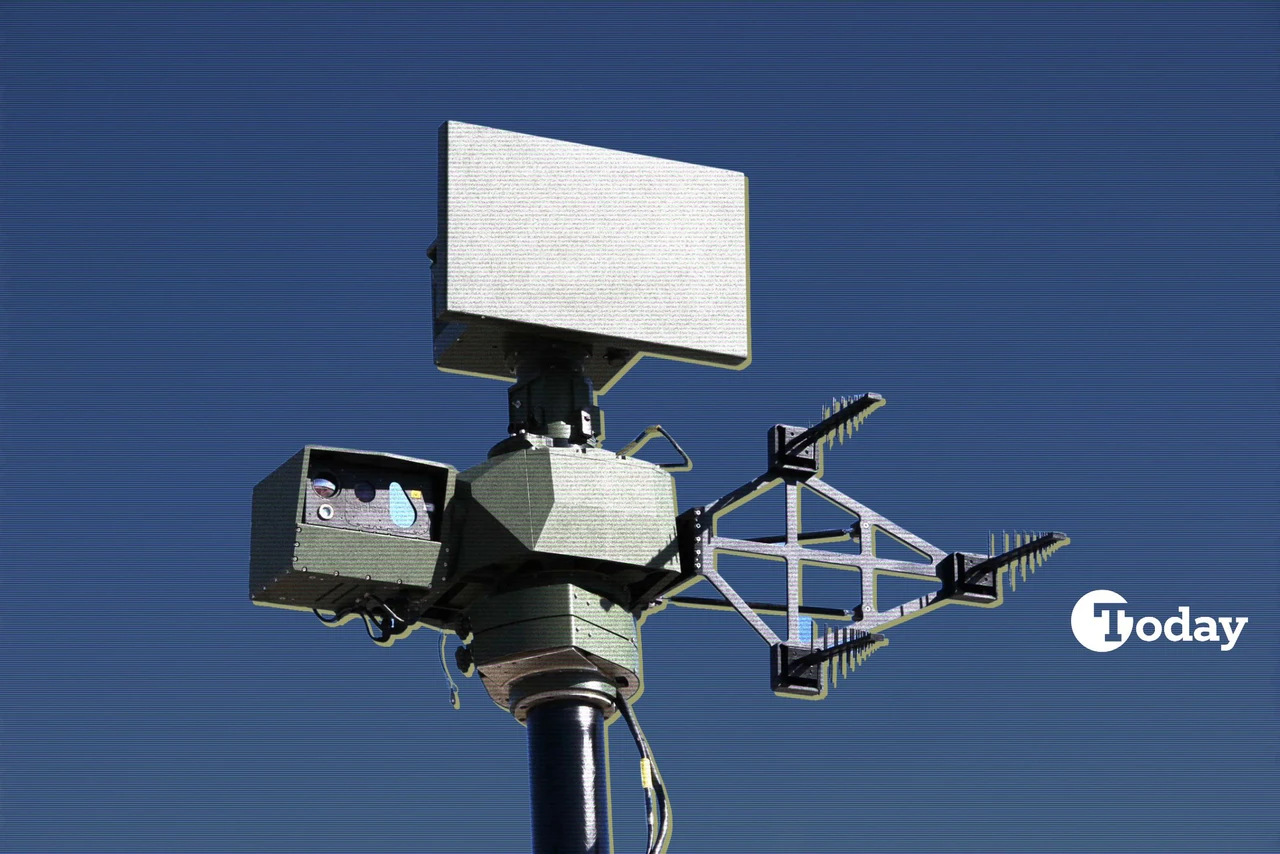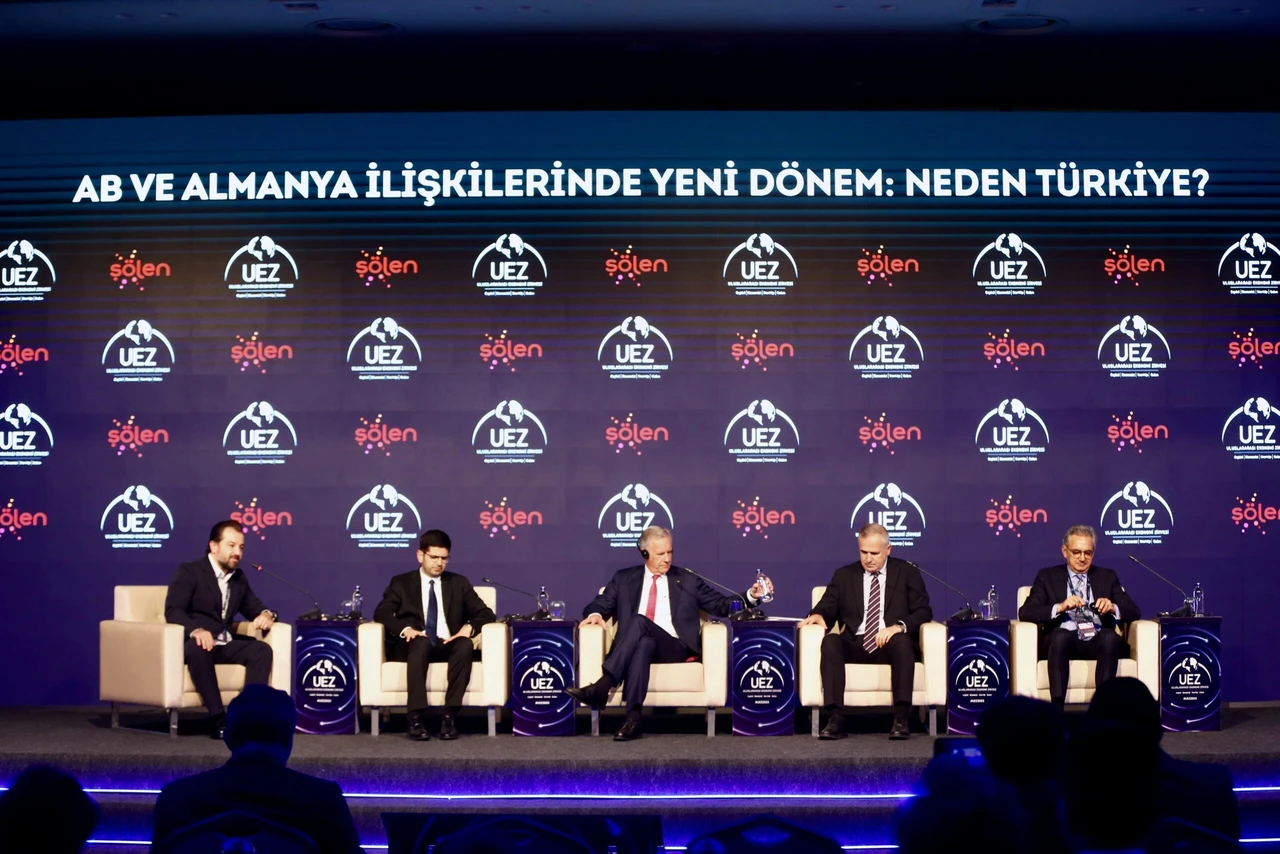Türkiye sets sights on anti-drone success on the battlefield
 Photo: The IHTAR Anti-Drone System, developed by ASELSAN, is a countermeasure system designed to neutralize mini and micro UAVs. (ASELSAN website)
Photo: The IHTAR Anti-Drone System, developed by ASELSAN, is a countermeasure system designed to neutralize mini and micro UAVs. (ASELSAN website)
In 2024, reports emerged revealing that the terrorist organization PKK conducted at least 17 FPV drone strikes against the Turkish military in June, allegedly procuring materials through supply networks stretching across Ukraine, Europe, Georgia, and Iran. Yet, for Türkiye, this is nothing new.
In 2016, a Daesh-controlled drone dropped explosives on Turkish troops in Syria, marking a turning point in modern asymmetric warfare. Since then, armed UAVs have become a staple in conflicts from Ukraine to the Middle East, with non-state actors rapidly weaponizing off-the-shelf drone technology.
Analyst Barin Kayaoglu was among the first to highlight this evolving threat. Speaking to Türkiye Today, noted how Türkiye’s counter-drone strategy has shifted over the years: “At the time, the preferred method in anti-drone defense was electronic jamming. These days, Aselsan, Türkiye’s main contractor for the Steel Dome air and missile defense system, is rolling out platforms like Gurz and developing others like Gokberk that can go for a ‘hard kill.’”
“Türkiye has long been a drone powerhouse, exporting UAVs to multiple countries. Now, the question is whether it can do the same with counter-drone technology. Türkiye could establish itself as a leader in the counter-drone sector, but not without serious R&D investment or strategic partnerships,” Kayaoglu emphasized. “Baykar and TUSAS have raised the bar with their drones. It’s only fair to expect Aselsan and others to lead the charge in anti-drone defense as well.”
Growing need for technology
The rapid proliferation of drones has led to both opportunities and challenges across various sectors, from commercial applications to security risks. As drones become more accessible and technologically advanced, the threats they pose to civilian and military infrastructure have intensified. In response, countries worldwide have increased investments in counter-unmanned aerial systems (C-UAS) to mitigate potential threats.
Drones have increasingly been involved in incidents that disrupt aviation and public safety. Reports of near-miss collisions between drones and passenger aircraft have risen significantly, with airports being particularly vulnerable to unauthorized drone activity. Security concerns have further escalated with the potential for drones to be weaponized for terrorist activities, making the development of anti-drone technologies a critical priority.

Hunting the hunters
Drones have emerged as a serious security threat, particularly in sensitive locations like airports and critical energy sites, such as natural gas extraction fields. Over the past decade, major international airports have faced significant disruptions because of drone activity, resulting in flight cancellations, delays, and substantial financial losses.
In a striking example, Hezbollah’s drone threat in 2021 forced Israel to suspend operations for days, underscoring the strategic risks posed by UAVs. High-profile incidents at Gatwick Airport in the UK and Newark International Airport in the US have further exposed the vulnerabilities of existing air traffic control systems, which struggle to detect and neutralize small, fast-moving drones.
Beyond disruptions, drones have been increasingly used for malicious purposes, including espionage, and smuggling for terrorism. Various illegal military groups have adopted drone technology due to its low cost, ease of deployment, and ability to bypass traditional security measures. With advancements in drone automation, these devices can be pre-programmed with GPS coordinates, eliminating the need for real-time operator control and making them harder to counter.
Critical infrastructure sites such as nuclear power plants, government buildings, and crowded public spaces are particularly vulnerable to drone-related attacks. While no catastrophic incidents have occurred to date, the psychological impact of drone threats remains significant, necessitating ongoing innovation in counter-UAV solutions.
From drone maker to drone stopper
Deniz Altin, a defense industry business development expert, believes that Türkiye is making significant strides in the anti-drone space. “Hard kill solutions often involve fragmentary munitions like 25 mm or 30 mm rounds,” Altin explained. “However, these are more effective in open battlefields. The risk of collateral damage is quite high in urban environments, making them a less viable option.”
Instead, the industry expert points to the growing preference for interceptor drones, which can neutralize hostile UAVs mid-air. “Given the battlefield feedback we’ve seen recently, using drones to take down drones has become the most logical approach,” he said. “Not only are they cost-effective, but they are also more adaptable to different threat scenarios.”
Türkiye’s defense giants, including Aselsan, Roketsan, and Meteksan, are all investing heavily in counter-drone solutions. “Most of their efforts have been focused on soft kill solutions, such as jamming and electronic warfare,” Altın noted. “But we are starting to see more interest in laser-based and interceptor drone technologies as well.” Roketsan, for example, has been developing directed energy weapons that can target UAVs, though their deployment remains limited to larger military operations because of energy requirements.
ASELSAN’s Ihtar and Kangal anti-drone products have been deployed extensively, particularly in Azerbaijan and other Turkic states. Bogazici Savunma’s Ilter system has found its primary market in the Gulf countries and Azerbaijan. Meanwhile, Meteksan’s Kapan anti-drone system has been successfully exported to Bangladesh. SDT-Tamgor’s partnership has resulted in TSA-equipped BMC Kirpi vehicles, which have been deployed in African countries such as Nigeria, Libya, Tanzania and Burkina Faso.
Despite these developments, Altın acknowledges that Türkiye still has ground to cover in the counter-drone market. “Many firms are still leaning towards more traditional defense solutions,” he said. “But as the demand for counter-drone systems grows, we’ll likely see a shift towards more innovative technologies, particularly in the export market.”
Currently, Türkiye’s anti-drone solutions are primarily exported to the Gulf, Central Asia, and parts of Asia-Pacific. However, Altın foresees growing demand from Europe and the U.S., particularly in the non-military clients market.

Meet the machines
Among the most notable is Aselsan’s IHTAR, a multi-layered defense system that integrates radar, electro-optical sensors, and RF jammers, including the GERGEDAN Active RF Jammer, to neutralize mini and micro UAVs. Its flexible deployment options allow it to function effectively in both fixed and mobile configurations.
Another advanced system, Meteksan’s KAPAN, excels in detecting and countering swarm UAV threats. Utilizing the Retinar FAR Radar with Ka-Band frequency, KAPAN ensures 360-degree surveillance, supported by RF jamming and an optional high-powered laser for precise drone elimination.
SDT’s AVCI system brings precision targeting to the forefront with its Passive Electronically Scanned Array (PESA) radar technology, enabling accurate UAV tracking, even in cluttered environments. Equipped with advanced electro-optical systems, AVCI differentiates drones from other airborne objects, while directional RF jamming minimizes collateral interference.
Transvaro’s Fedai, on the other hand, focuses on agility and high-altitude performance. Constructed from lightweight carbon fiber, Fedai operates at altitudes of up to 5,000 meters and deploys rapidly against multiple drone threats, making it ideal for high-risk areas. Meanwhile, Baygalata’s TUZOQ system stands out with its ability to detect up to 500 drones simultaneously within a five-kilometer radius. Combining radar, electro-optical cameras, RF sensors, and microwave emitters, TUZOQ provides real-time threat elimination, reinforcing Türkiye’s growing reputation in the counter-UAV market.
The three faces of the drone war
Turkish defense manufacturers have built a lineup of counter-drone systems to tackle every type of threat. Three rough categories of airborne threats involve low-cost kamikaze UAVs, sophisticated swarm attacks, and top-tier, high-performance UAVs.
The first group consists of easily accessible FPV drones and modified commercial UAVs—often deployed for kamikaze strikes or reconnaissance. These are best neutralized through electronic warfare (EW) measures like RF jammers and agile interceptor drones designed to strike fast and hard. The key point in this category is to respond without spending so much to retrieve sustainability.
In the case of a coordinated offensive where multiple drones operate in unison, defending it requires a mix of advanced radar systems, AI-driven automated defenses, and high-energy laser weapons that can take down multiple UAVs simultaneously.
The third and most formidable threat comes from high-end UAVs featuring advanced avionics, long-range capabilities, and heavy payloads. These require a multi-layered approach involving robust air defense networks, kinetic interceptors, and cutting-edge EW systems. These expensive and strategically critical threats demand layered defense systems, including air defense networks, kinetic interceptors, and advanced EW measures.
Türkiye’s defense industry has proactively positioned itself in tackling all three levels of threat, leveraging a diverse portfolio of solutions tailored to neutralize evolving aerial warfare tactics.
Game of drones
The United States leads the field with sophisticated C-UAS (Counter-Unmanned Aerial Systems) like the Drone Defender by Battelle, the Coyote interceptor by Raytheon, and Israel’s Iron Beam—a high-powered laser system developed by Rafael.
The UK has also stepped up with its AUDS (Anti-UAV Defense Systems), which integrates radar, optical tracking, and jamming to neutralize rogue drones. Meanwhile, China has been investing heavily in swarm countermeasure technologies, developing both jamming and kinetic strike solutions to address the increasing drone threat.
Türkiye, having made an early move in the field, has successfully met its own counter-drone needs and seemingly transitioned itself into an exporter in the highly competitive global market.



